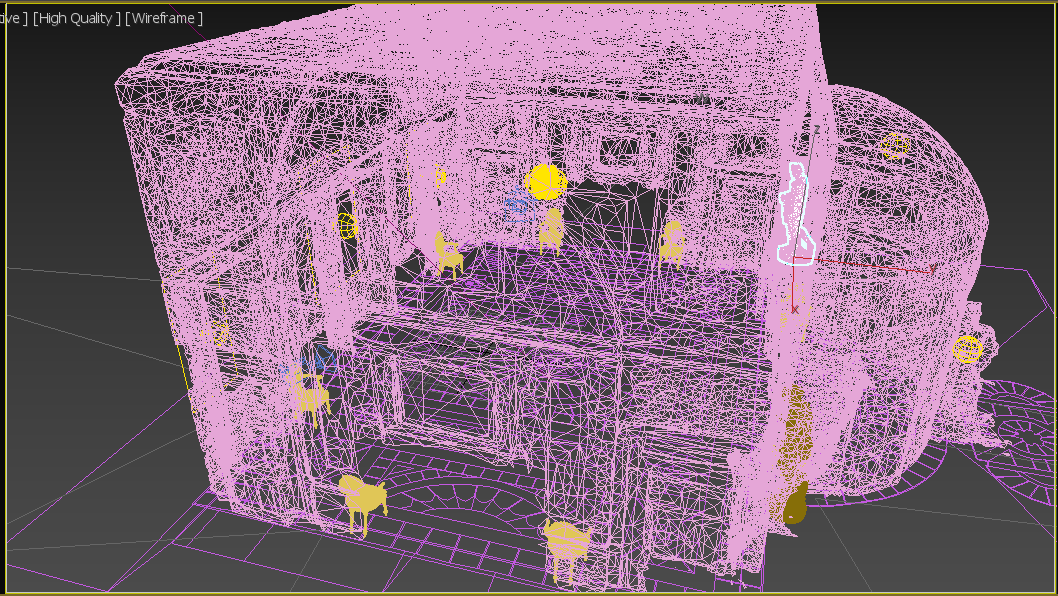What does Post Processing Involve?
Post-processing for photogrammetry can involve many things. We’ll go over some of the basics and why it might be needed for specific types of projects.
Initial Image Processing
Though the term ‘photogrammetry’ includes both the photography as well as the processing of those images to create a 3d model, here we use post-processing to include the latter. This is because we offer the option for clients to send us their photography to be processed into a 3D model when using the software is not convenient or available for them. This is the most basic level of post-processing when it requires no further cleanup or reduction.
Size Reduction
One post-processing requirement is model size reduction. Photogrammetry often creates dense point clouds with lots of information. This is helpful when capturing details. However, it can make the model quite heavy, the file size quite high. This can cause a problem in different use-cases such as online, gaming, or immersive tech integration.
Cleanup and Issue Resolution
Even when practicing good photography techniques, certain factors can affect the quality of your resulting model and some cleanup may be required. Some of these factors may include:
shiny or reflective materials - examples include polished wood, glass, mirrors, glossy metals. This is an issue because the software can’t understand the concept of a reflection and thinks it’s seeing something beyond or behind the object.
thin features - examples include slats on chairs on banisters, chair and table legs, leaves, stems, and branches on plants and trees, and wire meshes. This is another case where the software gets confused about where one object ends and the background begins.
intense or changing sunlight or shadow - changes in lighting can confuse the software and may cause issues when aligning the photos. Sunlight or shadows can also obscure details which may lead to the software failing to complete these sections in the model.
obscured features- the software can only model what it sees. If some part of an object, landscape, or building is obscured behind other objects, foliage, etc, it cannot recreate this.
For these reasons, some cleanup may be required to fix any issues caused by these factors. Sometimes image manipulation or strategically leaving out certain images can help, but it may also require cleanup of the mesh in software like 3ds Max or Blender to patch holes or smooth out abnormalities.
Retopology
Certain projects require a cleaner topology than is typically created by the photogrammetry software. Topology refers to the organization of triangles connecting vertices in the model’s mesh. An example of good topology means that there are clean ‘seams’ at logical edges along which, if needed, a model could be cut or unfolded. Retopology can also greatly reduce the number of triangles, edges, and vertices making the model a lot less complicated and easier to manipulate. This is often required when the model is being used in game engines, in immersive technology, or when the model needs to be modified through further 3D modeling. It can also be required in the case of 3D printing to reduce the possibility of printing errors.
Additional 3D modelling
Sometimes a project requires additional modeling on top of the photogrammetry model. This might be to add details that no longer exist or for creative or storytelling purposes. Sometimes, the photogrammetry model is more of a reference or starting off point. For example, in our Skipsea Castle project, a landscape model of the mound where the castle once stood was used to accurately reconstruct the model so that it could then be placed back into the landscape through augmented reality.
Texture Repair or Modification
You might think of a 3D model texture as the skin. It’s what provides the outer colours and details that make the model look realistic. Texturing can be quite a complicated process, and luckily photogrammetry software often creates and manages it for us. However, when there is something about the texture that needs to be fixed or modified, (for instance, removing a sign from a building, or changing the color of an object) this requires an understanding of how something called texture UV mapping works. Working with textures is a very specialised skill using software such as Adobe Substance Painter or Blender’s texture painting feature. It can be used to fix issues resulting for poor lighting conditions or for changing the look of the original object.
Original model
Model with furniture removed
Repaired model with modified mesh and textures
As you can see, there are several different cases where post-processing might be required to make a project look more professional or perform better. If you have questions about post-processing methods or use cases, please get in touch.








